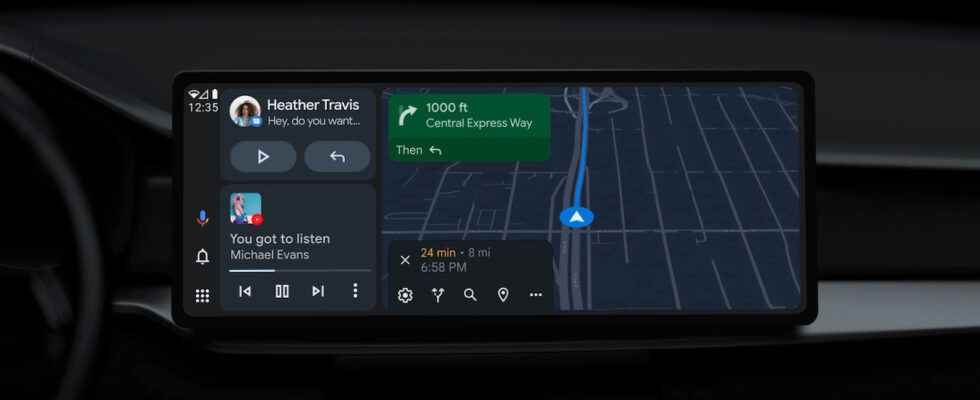Google’s annual conference, which began on May 11, was particularly rich in announcements. On the second and last day of its Google I/O, the Mountain View firm once again lifted the veil on other new features, this time concerning Android Auto. The firm, which took the opportunity to recall that its embedded operating system was integrated into some 150 million vehicles of all brands, has noted in recent years that users use it mainly for three functions: navigation, access to multimedia content and communication.
Also see video:
A responsive interface
Based on this observation, Google has worked on a new Android Auto interface, the deployment of which will begin this summer. With this new design, the Californian company hopes to be able to help you find your way more quickly, and control the playback of your music more easily and keep the functions that interest you most at your fingertips. The Android Auto interface will therefore adapt to the different screen sizes of vehicles thanks to a “Split Screen” mode. The screen will thus be divided into several zones which will be organized differently depending on the size and format of the on-board screen. This will allow you to keep the functions you use most often on the screen.
Google Assistant caring
To accompany this facelift, Google has also worked on its voice assistant. It will gain in autonomy by offering you new contextualized suggestions, to allow you to do more without taking your eyes off the road. It will thus be able to suggest replies to the messages received, will offer to share your ETA (estimated time of arrival) with your loved ones and will even suggest playlists of music likely to please you.
Google also had the good idea to integrate on the main screen quick access to call or send a message to your favorite contacts, but also to choose a suggested response to the messages you receive. You will be able to delegate more tasks to him.
Like every year, the Google I/O was an opportunity for Google to unveil its many new features to come. The Mountain View firm, for example, presented the new functions ofAndroid 13its new ultra-realistic immersive view in Google Maps, but also its great advances in artificial intelligence, in particular through the visual search of Lens. But this developer conference also allowed him to give a first glimpse of his future Pixel 7 and 7 Pro smartphones, his Pixel Watch and his future Pixel Tablet.
Source : Google
